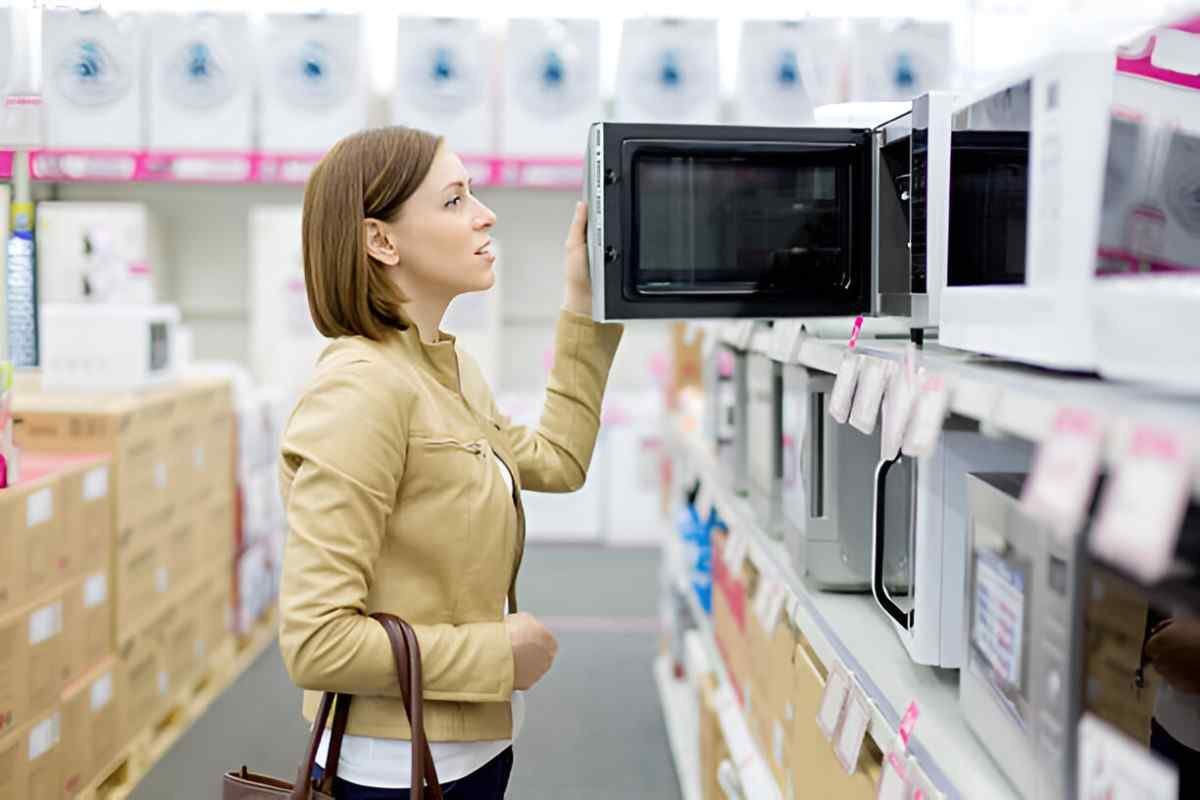Microwave ovens have become an essential part of modern kitchens. Whether you want to reheat leftovers, defrost frozen food, or prepare an elaborate meal, a microwave oven can save time and make your life easier. Choosing the right microwave oven, however, can feel overwhelming. With so many models, features, and sizes available, how do you decide which one suits your needs best? I’ve spent time researching and breaking down the details to help you make an informed decision.
Let’s walk through everything you need to know about microwave ovens. By the end of this guide, you’ll understand the types of microwaves, key features to look for, and how to compare models effectively.
Table of Contents
Understanding the Types of Microwave Ovens
Microwave ovens come in three main types:
1. Solo Microwaves
Solo microwaves are the most basic type. They are great for reheating, defrosting, and simple cooking tasks. However, they don’t have advanced features like grilling or convection cooking.
Advantages:
- Affordable
- Easy to use
- Ideal for small households
Disadvantages:
- Limited functionality
- Not suitable for baking or grilling
2. Grill Microwaves
Grill microwaves come with an added grilling feature, making them more versatile than solo models. They allow you to grill and roast food in addition to basic reheating and defrosting.
Advantages:
- Can grill or brown food
- Versatile
- Affordable compared to convection models
Disadvantages:
- Limited baking capabilities
3. Convection Microwaves
Convection microwaves are the most advanced type. They combine microwave technology with convection heating, allowing you to bake, roast, grill, and cook complex recipes.
Advantages:
- Highly versatile
- Suitable for baking and grilling
- Cooks food evenly
Disadvantages:
- More expensive
- Can be bulky
| Type | Best For | Not Ideal For | Price Range |
|---|---|---|---|
| Solo | Reheating, defrosting | Baking, grilling | $50 – $100 |
| Grill | Grilling, reheating | Baking | $100 – $200 |
| Convection | Baking, roasting | Budget shoppers | $200 and above |
Key Features to Consider
When shopping for a microwave oven, it’s important to focus on features that matter to you. Let’s go over the key factors you should keep in mind:
1. Size and Capacity
Microwave ovens come in various sizes, typically measured in liters. Smaller microwaves (15-20 liters) work well for individuals or couples, while larger models (25 liters or more) are better for families.
Tip:
Consider the size of your kitchen counter and the dishes you’ll use inside the microwave. A compact microwave is better for smaller kitchens, while larger families should opt for models with more capacity.
2. Power Output
Microwave power is measured in watts. Higher wattage means faster and more even cooking. For basic needs, a microwave with 700-900 watts is sufficient. If you want to cook complex dishes, consider models with 1000 watts or more.
3. Control Panel
Microwaves come with touch panels, mechanical dials, or a combination of both. Touch panels look modern but may be harder to operate if you’re not tech-savvy. Mechanical dials are more durable and simpler to use.
4. Pre-set Cooking Menus
Many microwaves come with pre-set menus for popular dishes like popcorn, pizza, and vegetables. These can simplify cooking and ensure consistent results.
5. Child Lock
If you have kids, a microwave with a child lock is essential. It prevents accidental operation and ensures safety.
6. Additional Features
- Turntable vs. Flatbed: Traditional microwaves have a rotating turntable, but some modern models use flatbed technology, offering more even cooking and easier cleaning.
- Inverter Technology: Microwaves with inverter technology provide consistent power, resulting in better cooking and energy efficiency.
- Sensors: Sensor cooking adjusts the time and power automatically based on the food’s humidity.
| Feature | Benefit | Recommended For |
|---|---|---|
| Power (Wattage) | Faster cooking | Heavy users, families |
| Inverter Tech | Even heating, energy efficiency | Cooking enthusiasts |
| Child Lock | Safety | Families with children |
| Pre-set Menus | Convenience | Beginners |
Comparing Popular Microwave Ovens
To make your decision easier, I’ve compared some of the best microwave ovens available. Here’s a detailed table summarizing their key specifications:
| Model | Type | Capacity | Wattage | Features | Price |
|---|---|---|---|---|---|
| Panasonic NN-SN67HS | Convection | 23L | 1200W | Inverter, pre-sets, child lock | $250 |
| LG NeoChef | Solo | 25L | 1000W | EasyClean, sleek design | $150 |
| Samsung MG23K3575AK | Grill | 23L | 800W | Grill function, ceramic interior | $180 |
| IFB 30SC4 | Convection | 30L | 900W | Steam clean, auto cook menu | $230 |
Tips for Choosing the Right Microwave Oven
When buying a microwave oven, ask yourself these questions:
1. What Will I Use It For?
If you mainly reheat or defrost, a solo microwave is sufficient. For grilling or roasting, opt for a grill model. For baking and versatile cooking, a convection microwave is ideal.
2. What’s My Budget?
Set a budget before you shop. Solo microwaves are the most affordable, while convection models are pricier but more versatile.
3. How Much Space Do I Have?
Measure your counter space to ensure the microwave fits. Consider the door swing and ventilation requirements.
4. Do I Need Extra Features?
Think about features like inverter technology, pre-set menus, or a child lock. Don’t pay extra for features you’ll rarely use.
Maintenance and Care Tips
To keep your microwave oven in top condition, follow these tips:
- Clean Regularly: Wipe spills and splatters immediately to prevent buildup.
- Use Microwave-Safe Containers: Avoid metal or non-microwave-safe plastics.
- Check the Seal: Ensure the door seal is clean and intact.
- Avoid Overloading: Don’t put oversized dishes inside.
- Follow the Manual: Always refer to the manufacturer’s instructions for proper use.
Final Thoughts
Choosing the best microwave oven doesn’t have to be daunting. Start by identifying your needs and budget, then focus on features that matter most. Whether you’re a casual cook or a culinary enthusiast, there’s a microwave out there that’s perfect for you. With this guide, you’re now equipped to make a confident decision. Happy shopping!





